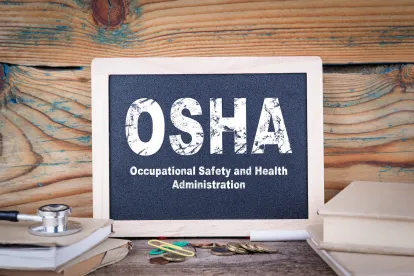On May 19, 2020, OSHA issued two updated memorandums to regional administrators and state plan designees. The first updated the agency’s enforcement guidance for recording COVID-19 cases in the workplace. As we discussed here, OSHA originally indicated on April 10, 2020 that it would be exercising “enforcement discretion” and focusing COVID-19 recordkeeping requirements in the healthcare, emergency response, and correctional institution fields only—except where there was objective evidence reasonably available to an employer that a COVID-19 case was work-related. The aim was to allow vital COVID-19 response resources to be allocated elsewhere.
The new memorandum rescinds the original guidance, however, and now states that all employers subject to its illness record-keeping rules (which is most employers) must now track and report workplace COVID-19 cases if the following three criteria are met:
-
The COVID-19 case is confirmed (as defined by the CDC);
-
The case is work-related (as defined by 29 C.F.R. § 1904.5); and
-
The case involves one or more of the general recording criteria (as set forth in 29 C.F.R. § 1904.7).
OSHA reasons that confirmed COVID-19 cases have now been found in nearly all parts of the country and among many industries, and that employers are presently more capable of adapting to new ways of doing business and evolving their COVID-19 response efforts.
Regardless, OSHA still recognizes the difficulty with determining work-relatedness of COVID-19 cases, and will thus continue to exercise enforcement discretion with regard to employer’s work-related determinations, as further described in the memorandum. The agency’s key considerations will be (1) the reasonableness of the employer’s investigation into work-relatedness; (2) the evidence available to the employer; and (3) the evidence that a COVID-19 illness was contracted at work.
The second memorandum rescinded and updated OSHA’s April 13, 2020 Interim Enforcement Response Plan for COVID-19. The most notable highlights from this updated guidance include the following:
-
Eliminating hazards from COVID-19 remains a top priority for OSHA;
-
OSHA will largely return to pre-pandemic inspection procedures in low-community-spread areas and low- and medium-risk workplaces, with certain enumerated priorities and precautions for COVID-19-related issues; and
-
OSHA will continue to use caution and enforcement discretion in higher-community-spread areas and high-risk workplaces, including COVID-19 and imminent danger inspection prioritization, rapid response investigations, and other protective measures.
In short, as OSHA continues to be under fire for its response to the COVID-19 pandemic, employers can expect more in-person investigations (generally) as well as continued scrutiny related to COVID-19 issues (more specifically). In order to be adequately prepared, employers should implement and/or update their pandemic response plans as soon as possible.




 />i
/>i
